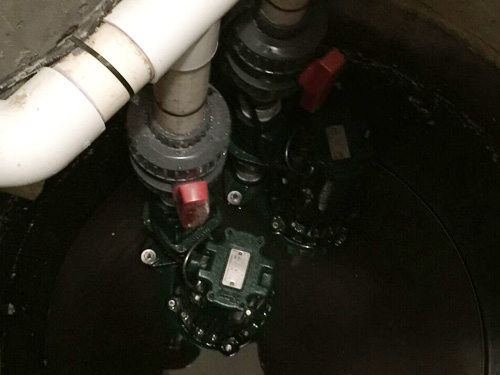The rain is here and if the last couple weeks are any sort of truthful indication, it’s going to be a busy winter in the lower mainland.
The issue is that a lot of the work is preventable. There’s no way we can get around to everyone experiencing flood problems and drainage issues fast enough, so that’s why we’re putting the onus on you, loyal reader, to take action.
Installing a residential pump system before your basement floods is essential. Here are four keys to make your investment worthwhile.
1. Back-Up Pumps
Sorry, one pump isn’t going to cut it. As we saw with the power outages after the storm on November 17th, a single pump that fails can have disastrous results. It happens, and it’s frustrating, but that’s the reality in this climate. A mechanically-operated secondary backup pump will ensure water is pumped away from your home in the event your primary pump gets jammed or stops working entirely.
2. High Level Alarm
Now that we’re certain we’ll have at least one pump operating at all times, it’s nice to know we’ll be alerted should water levels rise too high. A high level alarm indicates when groundwater is exceeding critical levels so you can plan accordingly. If groundwater around your home is rising faster than your system can cope, you’ll need a more robust system, or something has changed and you will need a proper assessment on your pump station.
3. Duplex Panels
Alright, we have a backup and we’ll be informed when groundwater is on the rise. The next step: automation. Duplex panels control the programmable logic centre attached to your pumps. They function by cycling the work back and forth between your pumps so each gets equal wear. Basically, you’re getting double the benefit of your pumps and your system will last twice as long. Duplex panels can also be designed so an alarm is triggered when one of your pumps fails. Typically, pumps last between five and 10 years depending on usage, so you’ll get more peace of mind if you’re creating equal wear. Newer designed residential duplex panels can also track run time and cycle time. We have typically guessed how much the pumps run based on “I hear it going off all the time”. Its better to decide your pumps wear and tear with some history on how much the system runs. Other issues regarding not having a duplex panel is if a pump runs all year in the primary position and you have your secondary pump set to turn on at a higher water level, if this pump never turn on for a year, it may actually corrode in the impeller and not operate when you need it. A duplex panel is a must.
4. Emergency Generators
An emergency generator (Generac Automatic) is almost as important as a TV in terms of what you need in your home. Not enough people that rely on pumps to keep their homes dry use emergency generators. Don’t wait until something fails. Backup pumps, high level alarms and duplex panels all help in the event of a disaster, but if there is a power outage, you are a ticking time bomb.
Alright, Am I Secure?
Without a residential drainage system your probability of flooding skyrockets. These aren’t the prairies, folks, and we don’t live on the top of a hill.
And even still, electrical and mechanical equipment fails. You need to maintain your system and perform regular checks whenever the seasons change. Cheap pumps that don’t perform under the (literal) pressure will just end up costing more than they’re worth in the longrun. Typically new pump stations with duplex panels cost between #3500 – $5000. A regular commercial grade drainage pump can cost between $550 to $1250 depending on size and horsepower.
No matter what your budget is, make sure you’re getting something that can handle the Vancouver winter.
Because at some point, when the wind blows, the creek surges and the snow melts, you’ll be glad you did.

